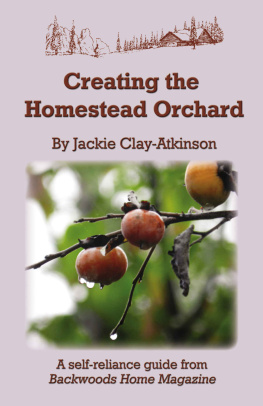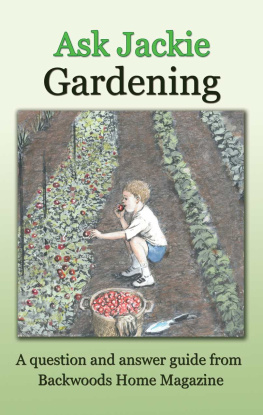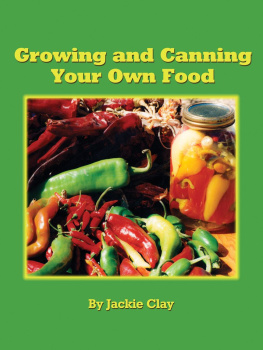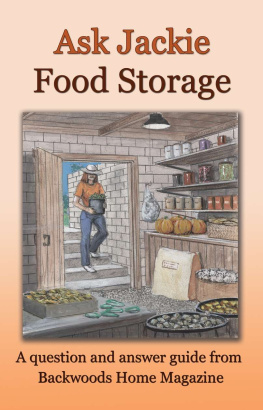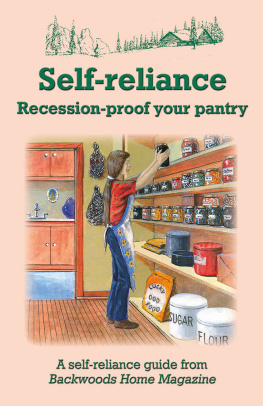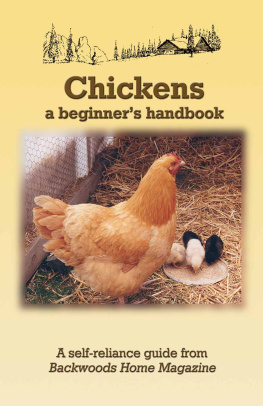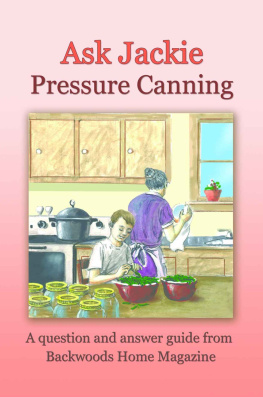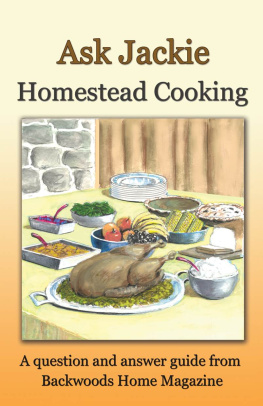Table of Contents
Creating the Homestead Orchard
A self-reliance guide from Backwoods Home Magazine
By Jackie Clay-Atkinson
Copyright 2015
Backwoods Home Magazine , Inc.
PO Box 712
Gold Beach, Oregon 97444
www.backwoodshome.com
Editing, layout, and proofreading by:
Lisa Nourse, Rhoda Denning, Ilene Duffy, and Jessie Denning
Introduction
By Jackie Clay-Atkinson
A lmost all homesteaders grow a garden, raise at least some livestock and poultry, and enjoy putting up lots of food in their pantries. But many of us neglect planting fruit and nut trees. I guess its because we know it will be several years before we get our first crop, so we put it off.
By taking the time to plant those trees and bushes (and ensuring that they get good care), we are making sure we will have a huge bounty of pesticide-free, nutritious, and tasty fruit before we know it. The years really do fly by, especially on a new homestead with so much to get done! And have you priced fruit and nuts in your local market lately? Its rare to find apples for less than a dollar a pound. Ive seen some varieties such as the popular Honeycrisp selling for more than three dollars a pound.
Its not rocket science to figure out how much money even a small orchard in your back yard will save you.

Theres nothing like picking a sun-warmed, ripe peach from your own tree.
An added bonus is that the taste of homegrown fruit is far superior to that of shipped-in, store-bought produce from Chile, Mexico, or Peru. The shipped-in produce is often picked green. It looks ripe but is usually as hard as a rock. Folks buy produce at extreme prices, figuring the fruit will ripen at home, but often it rots first.
Theres absolutely nothing like picking a sun-warmed, fragrant, ripe peach from your own tree and eating it right in the orchard. Or picking a crisp, cold apple in an autumn morning and biting into it.

Dont feel overwhelmed at the bushels of fruit youll get. You can eat many fresh, preserve most, and give the rest away or feed them to your livestock.
Some folks dont plant fruit because they are stumped at what to do with bushels of fruit. Take apples, for instance. Your young apple tree may give you three bushels of fruit; an older tree may produce 10 bushels. Yes, thats a lot, but consider what you can do with apples. Besides eating them fresh, I make cider, apple jelly, apple butter, and canned apple juice. I also dehydrate and can apple slices. The not-so-nice apples give our goats and chickens a nutritious snack, which reduces our feed bill. I trade leftover apples to friends. If I still have more apples, they usually store well (depending on type) in an unheated basement or root cellar to be enjoyed all winter long.

I make cider, dehydrated apple slices, canned apple slices, apple jelly, apple butter, and canned apple juice with our apples. Any damaged apples make a nutritious snack for the goats and chickens, which lessens our feed bill.
Even a city yard usually has room for several fruit trees and/or bushes. My grandmother lived in Detroit on a large lot. Instead of decorative trees and shrubs, she planted a peach tree, a pear tree, a plum tree, and an apple tree, as well as grapes and an assortment of bramble fruit and strawberries. Every fall, Mom and Grandma would harvest and can tons of fruit.
Having experienced the Great Depression firsthand, both Mom and Grandma knew the satisfaction and feeling of well-being that comes from a pantry bulging full of homegrown foods.
We all know how good that feels, so get out your shovel and plant some fruit trees right away. Those years will fly by and soon youll be harvesting your own delicious crop and enjoying terrific savings.
Apples on your homestead
A pple trees deserve a special place on every homestead, no matter how large or small. Ive never met a person who didnt love a crisp apple fresh from the tree. For that matter, Ive never met a person who would refuse an apple from root cellar storage during the cold of mid-winter. When I think of apples, I picture eating a sweet, crisp, juicy apple, but I can also picture all the ways I can use them in baking: apple pie, baked apples, apple bread, apple cake, apple upside-down cake, applesauce, fried apple pies, apple jelly, dehydrated apples, and even apple pectin to help set my other jams and jellies.
Luckily, apples grow in most sections of the country from frigid Zone 2 to balmy Zone 9. While they do have chilling needs to produce fruit, some varieties have quite short chilling requirements, so growing them down south is definitely possible. And while there are only a few extra-hardy varieties that will take the Arctic blasts of Zone 2, there are at least some. If you live somewhere in between these zones, you have the world by the tail. Even here in northern Minnesota (Zone 3) where we have some winter temperatures of -45 F, we are able to grow many different varieties of apples.

A three-year-old apple tree, bearing its second crop, with the six-foot-high fence surrounding our orchard to keep out deer and other pests.
In fact, we have more than 20 different varieties of apples growing happily in our little orchard. The most mature are only four years old right now. Some are starting to bear and every tree looks very healthy. We can hardly wait until they are all in production!
A short apple history
Archeologists say that people have been eating apples since 6,500 B.C. The only wild apples native to North America are crab apples. Some of these are fairly large, but most are not. Some are good to eat while others are bitter and unpalatable.
Apples originated from an area around the Caspian Sea and were eventually brought to England by traders. The apple first came to the United States in the Massachusetts Bay Colony, planted by the Pilgrims and brought to the New World from England. George Washington and Thomas Jefferson both had apple orchards.
Today, there are 2,500 varieties of apples grown in the U.S. and more than 7,500 varieties grown worldwide. Of the 2,500 varieties grown in the U.S., there are more than 100 varieties grown commercially. Today, apples are grown in all 50 states, with most commercial apple orchards found in Washington, New York, Pennsylvania, California, and Virginia.

Will enjoys a fresh apple while Domino, our mule, waits for the core. Animals like apples too!
Cold climate varieties
While it is definitely possible to grow apples in colder, less hospitable climates, you do need to make some adjustments to what trees you buy and where you get them. Ive made plenty of mistakes along the way (and had dead trees to show for it), so Im hoping youll learn from my mistakes and save yourself some discouragement.
When you live in Zone 4 or even some Zone 5 areas, youd think that you could plant any variety of tree listed for that zone. Well, that depends. If your Zone 5 is in a very windy area with some cold temperatures during the winter, your listed Zone 5 trees may not survive. We lived in Zone 5, on the high plains of northern New Mexico. It seemed warm enough to me, so I planted several semi-dwarf Zone 5 trees. Few survived.
Next page
